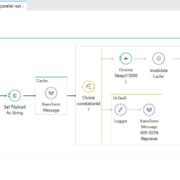There are many great articles out there on microservices. For those who have been hiding under a rock about the controversial technique—or are new to the idea—this article simply aims to collate the top open source tools available in one handy place. Microservice architecture, or just microservices, is a highly scalable structural style for developing software systems. Such architecture can be used for enterprise applications for businesses, governments, schools, and charities, etc. It is quite the opposite of the legacy-style monolithic architecture that focuses on a single unit application.
Microservices are small, independent, and unique. And the architecture can be complex in both construction and maintenance. Microservices communicate with each other to serve business goals utilizing synchronous protocols, HTTP/REST or asynchronous protocols. HTTP/REST or AMQP are examples of collaborating services that implement functions related to one another to work as efficiently as possible.
Source de l’article sur DZONE











 Don’t say this too loudly around agile conferences, but when it comes to the day-to-day work, Scrum and Kanban are basically the same.
Don’t say this too loudly around agile conferences, but when it comes to the day-to-day work, Scrum and Kanban are basically the same.